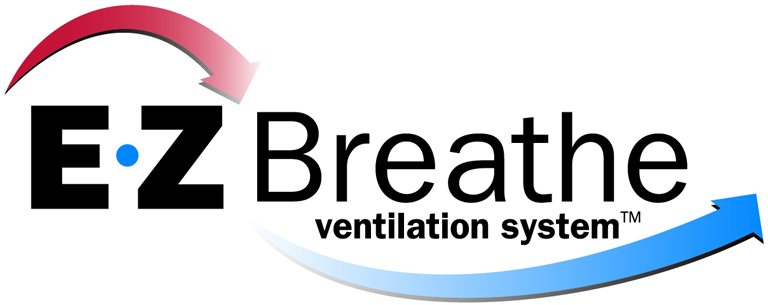Your home is meant to be a sanctuary—a place of safety and comfort. However, lurking within the walls of your home may be invisible threats to your health and well-being in the form of toxic chemicals. From household cleaners to building materials, many common items emit volatile organic compounds (VOCs) and other harmful substances that can degrade indoor air quality and pose health risks. In this article, we’ll explore the sources and effects of toxic chemicals in the home, as well as practical strategies for reducing exposure and improving indoor air quality.
Understanding Toxic Chemicals in the Home:
Toxic chemicals in the home can originate from a variety of sources, including:
- Household Cleaners: Many conventional household cleaners contain chemicals such as ammonia, chlorine, and phthalates, which can release VOCs and other hazardous substances into the air when used.
- Paints and Finishes: Paints, varnishes, and wood finishes often contain volatile organic compounds (VOCs), which can off-gas into the air, especially during application and drying.
- Building Materials: Some building materials, such as pressed wood products, carpets, and insulation, may contain formaldehyde, flame retardants, and other chemicals that can emit harmful fumes over time.
- Furniture and Upholstery: Furniture, mattresses, and upholstery may be treated with flame retardants, stain-resistant coatings, and other chemicals that can release VOCs and other toxins into the air.
- Air Fresheners and Fragrances: Synthetic fragrances found in air fresheners, candles, and personal care products can contain phthalates, which are known endocrine disruptors and respiratory irritants.
- Pesticides and Herbicides: Indoor use of pesticides and herbicides can introduce harmful chemicals into the home environment, leading to indoor air pollution and potential health risks.
The Impact on Indoor Air Quality and Health:
Exposure to toxic chemicals in the home can have a range of adverse effects on indoor air quality and health:
- Respiratory Irritation: VOCs and other airborne chemicals can irritate the respiratory system, leading to symptoms such as coughing, wheezing, shortness of breath, and throat irritation.
- Allergies and Asthma: Indoor allergens and irritants, including VOCs, can trigger allergic reactions and exacerbate symptoms in individuals with asthma and other respiratory conditions.
- Neurological Effects: Certain chemicals found in household products, such as formaldehyde and phthalates, have been linked to neurological effects, including headaches, dizziness, and cognitive impairment.
- Cancer Risk: Long-term exposure to certain chemicals found in the home, such as formaldehyde and benzene, has been associated with an increased risk of cancer, including leukemia and lymphoma.
- Endocrine Disruption: Phthalates, bisphenol A (BPA), and other endocrine-disrupting chemicals found in household products can interfere with hormone function and contribute to reproductive and developmental disorders.
- Indoor Air Pollution: Toxic chemicals emitted from household products can contribute to indoor air pollution, leading to poor indoor air quality and potential health hazards for occupants.
Practical Strategies for Reducing Exposure:
Fortunately, there are steps you can take to minimize exposure to toxic chemicals in your home and improve indoor air quality:
Choose Safer Products:
- Opt for environmentally friendly and non-toxic household cleaners, paints, and building materials labeled as low-VOC or VOC-free.
- Look for products certified by third-party organizations, such as Green Seal or the Environmental Protection Agency’s Safer Choice program.
Ventilate Properly:
- Use exhaust fans or open windows when using household cleaners, paints, and other products that emit VOCs or other fumes.
- Increase ventilation in your home by using ceiling fans, opening windows, and using air purifiers with HEPA filters to remove airborne pollutants.
Reduce Indoor Air Pollution:
- Minimize indoor air pollution by avoiding the use of air fresheners, candles, and other scented products containing synthetic fragrances.
- Choose natural alternatives, such as essential oils or homemade air fresheners, to scent your home without introducing harmful chemicals.
Dust and Vacuum Regularly:
- Dust and vacuum your home regularly to remove dust, pet dander, and other allergens that may harbor toxic chemicals and pollutants.
- Use a vacuum cleaner with a HEPA filter to trap fine particles and prevent them from being recirculated into the air.
Limit Pesticide Use:
- Practice integrated pest management (IPM) techniques to minimize the use of pesticides and herbicides indoors.
- Use non-toxic alternatives, such as diatomaceous earth or botanical insecticides, to control pests without introducing harmful chemicals into your home.
Choose Low-Toxicity Furnishings:
- Select furniture, mattresses, and upholstery made from natural materials or certified as low-VOC to minimize off-gassing of harmful chemicals.
- Allow new furniture and upholstery to off-gas in a well-ventilated area before bringing them into your home.
Test Your Home for Radon:
- Test your home for radon, a radioactive gas that can seep into homes through cracks in the foundation and pose a risk of lung cancer.
- Consider installing a radon mitigation system if elevated levels of radon are detected in your home.
Toxic chemicals in the home pose significant risks to indoor air quality and human health, yet they often go unnoticed or underestimated by homeowners. By identifying common sources of indoor air pollution and implementing practical strategies to reduce exposure, homeowners can create a healthier and safer living environment for themselves and their families. Don’t let invisible threats compromise the air you breathe—take proactive steps to clear the air and improve indoor air quality in your home today.
Contact the Professionals at EZ Breathe Today! 866-822-7328


